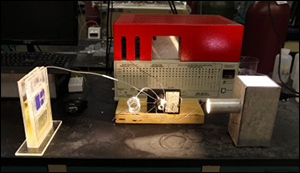Solar cell captures CO2 and sunlight, produces burnable fuel
29. 7. 2016 | UIC | news.uic.edu
Researchers at the University of Illinois at Chicago have engineered a potentially game-changing solar cell that cheaply and efficiently converts atmospheric carbon dioxide directly into usable hydrocarbon fuel, using only sunlight for energy.
Unlike conventional solar cells, which convert sunlight into electricity that must be stored in heavy batteries, the new device essentially does the work of plants, converting atmospheric carbon dioxide into fuel, solving two crucial problems at once. A solar farm of such “artificial leaves” could remove significant amounts of carbon from the atmosphere and produce energy-dense fuel efficiently.

While plants produce fuel in the form of sugar, the artificial leaf delivers syngas, or synthesis gas, a mixture of hydrogen gas and carbon monoxide. Syngas can be burned directly, or converted into diesel or other hydrocarbon fuels. The ability to turn CO2 into fuel at a cost comparable to a gallon of gasoline would render fossil fuels obsolete.
The technology should be adaptable not only to large-scale use, like solar farms, but also to small-scale applications. In the future, it may prove useful on Mars, whose atmosphere is mostly carbon dioxide, if the planet is also found to have water.
Read more at UIC
Image Credit: UIC
-jk-




